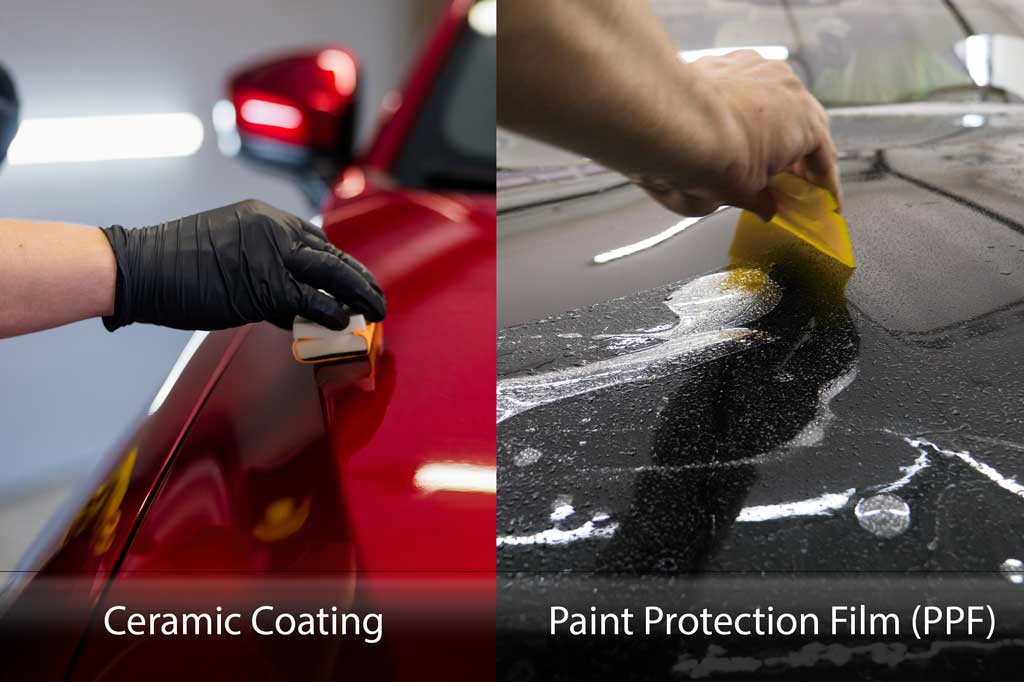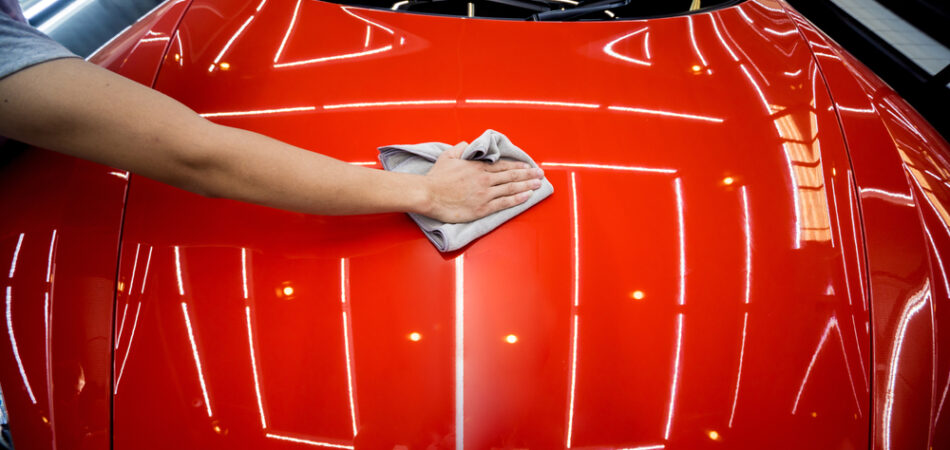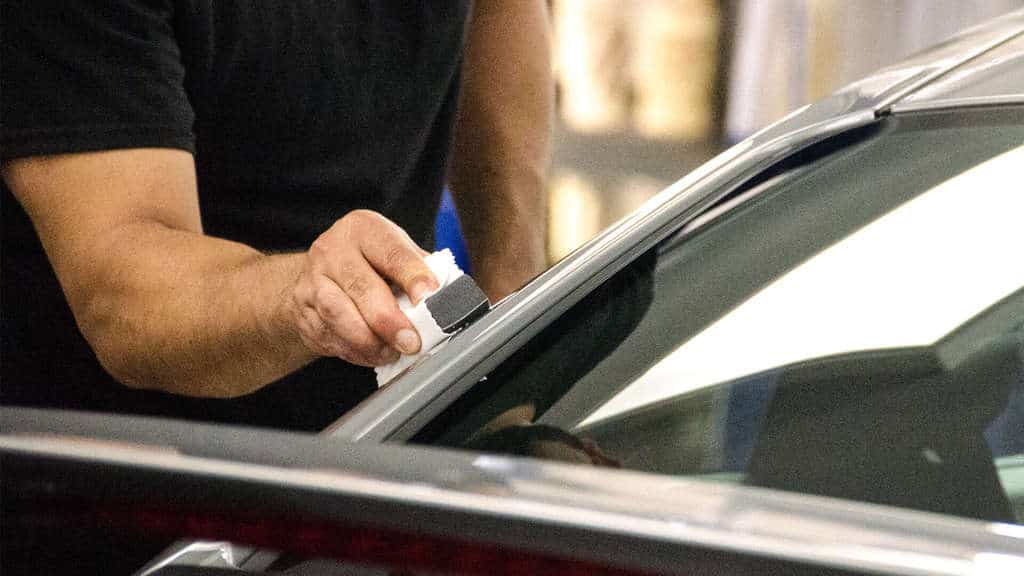The Rise of Ceramic Coating: Why It's the Best Selection for Auto Fanatics
The Rise of Ceramic Coating: Why It's the Best Selection for Auto Fanatics
Blog Article
The Duty of Ceramic Layer in Shielding Your Car's Paint From Environmental Damage
Ceramic layer has arised as an advanced solution for car owners seeking to protect the integrity of their lorry's outside. As we check out the nuances of ceramic covering, it ends up being noticeable that the option to execute this protective measure can significantly influence your automobile's long life and aesthetic.
What Is Ceramic Covering?
Ceramic covering is an innovative fluid polymer related to the external surface areas of a vehicle, developed to give a long lasting layer of security for the paint. This innovative solution creates a chemical bond with the automobile's manufacturing facility paint, producing a resilient and hydrophobic guard. The finish contains nanoparticles that fill out the tiny blemishes in the paint, causing a smooth surface that boosts gloss and radiate.
Typically, ceramic coatings are readily available in various formulations, permitting for different degrees of defense and longevity. While some items can last for numerous months, others provide security for several years, depending upon the density of the application and ecological factors. The application process needs thorough preparation, including washing, decontaminating, and polishing the automobile's surface to guarantee optimal adhesion of the covering.

Benefits of Ceramic Layer
One of the main benefits of applying a ceramic finishing is the exceptional defense it provides to vehicle paint. This innovative finish forms a durable layer that guards the automobile's surface area from a selection of environmental dangers, consisting of UV rays, acid rain, bird droppings, and tree sap. By supplying this durable protection, ceramic finishings dramatically minimize the risk of fading and etching, protecting the auto's aesthetic appeal gradually.
In addition to security, ceramic coatings are renowned for their hydrophobic residential or commercial properties, which push back water and dust, making it simpler to preserve a clean lorry. This self-cleaning effect decreases the frequency of washing, saving both time and resources. Moreover, ceramic coatings improve the deepness of the paint's gloss, causing a vivid and sleek appearance that boosts the overall appearance of the car.
One more notable advantage is the longevity of ceramic layers. Unlike conventional waxes or sealers that need constant reapplication, ceramic finishes can last several years, using an affordable service for auto proprietors seeking long-term security. Overall, spending in ceramic covering brings about enhanced sturdiness, minimized maintenance, and sustained visual charm for auto paint.
How Ceramic Finishing Functions
A ceramic coating operates through a chemical bonding process that develops a safety layer on the automobile's paint surface area. This ingenious solution utilizes sophisticated nanotechnology, where tiny bits of silica are suspended in a fluid type - ceramic coating. Upon application, these bits bond with the manufacturing facility paint, developing a hydrophobic and resilient layer that boosts the car's surface
The main part of ceramic coverings, silicon dioxide (SiO2), contributes to the finishing's stamina and strength. When healed, the finishing transforms right into a tough, glass-like coating that guards the paint from environmental impurities such as dust, UV rays, bird droppings, and tree sap. This molecular bond leads to a surface area that is not only immune to scratches however likewise easier to cleanse, as dirt and crud are much less most likely to stick.
Additionally, the hydrophobic buildings of ceramic finishes trigger water to bead and slide off, reducing the opportunities of water places and mineral down payments. This safety obstacle effectively lengthens the life of the paint and keeps the vehicle's aesthetic appeal, using cars and truck proprietors a resilient service for paint defense.
Application Process of Ceramic Layer
When taking into consideration the application of ceramic finishing, prep work is crucial to attaining ideal results. The very first step includes completely cleaning the automobile to remove dust, grime, and contaminants from the surface area. This usually includes a decontamination process making use of clay bars or chemical cleansers to make sure the paint is perfectly tidy. Any type of scratches or flaws ought to be addressed at this stage, as the finish will bond with the surface underneath.

Ceramic finishing is after that used in small sections, usually utilizing an applicator pad. The automobile ought to be left to heal in a controlled setting to permit the finish to completely bond with the paint.
Long-Term Upkeep and Treatment
Accomplishing a successful ceramic finishing application establishes the try this web-site foundation for lasting security, but correct maintenance is important to maintaining its benefits. Regular cleaning is necessary; using a pH-neutral automobile shampoo will certainly assist keep the coating's stability without creating damages. Avoid automated vehicle cleans that use unpleasant materials, as they can compromise the layer's surface.

Moreover, using a ceramic finishing maintenance spray can enhance the existing layer, providing an extra increase in protection and sparkle. It's recommended to execute this every 3 to 6 months, depending on ecological direct exposure.
Lastly, parking in shaded locations or using vehicle covers can avoid prolonged direct exposure to dangerous UV rays and environmental pollutants, better prolonging the life of your ceramic coating. By adhering to these maintenance methods, you can guarantee your lorry's surface stays safeguarded and visually appealing for years to come.
Final Thought
In summary, ceramic finishing offers as a crucial safety action for vehicle paint, effectively securing automobiles from an array of ecological threats. Its capacity to develop a durable hydrophobic barrier not only enhances visual appeal however additionally significantly minimizes the frequency and intensity of upkeep required. The long-lasting nature of this advanced polymer underscores its worth in maintaining automobile stability and appearance, ultimately adding to a more long lasting and visually attractive automotive coating.
Ceramic layer is a sophisticated liquid polymer applied to the outside surface areas of a lorry, designed to supply a long lasting layer of defense for the paint. Ceramic coverings enhance the depth of the paint's gloss, resulting in a lively and refined appearance that elevates the general look of the automobile.
A ceramic layer runs via a chemical bonding procedure that produces a safety layer here on the vehicle's paint surface.The major element of ceramic coverings, silicon dioxide (SiO2), adds to the finishing's toughness and durability.In recap, ceramic finish offers as an important protective action for vehicle paint, successfully securing lorries from a variety of environmental hazards.
Report this page